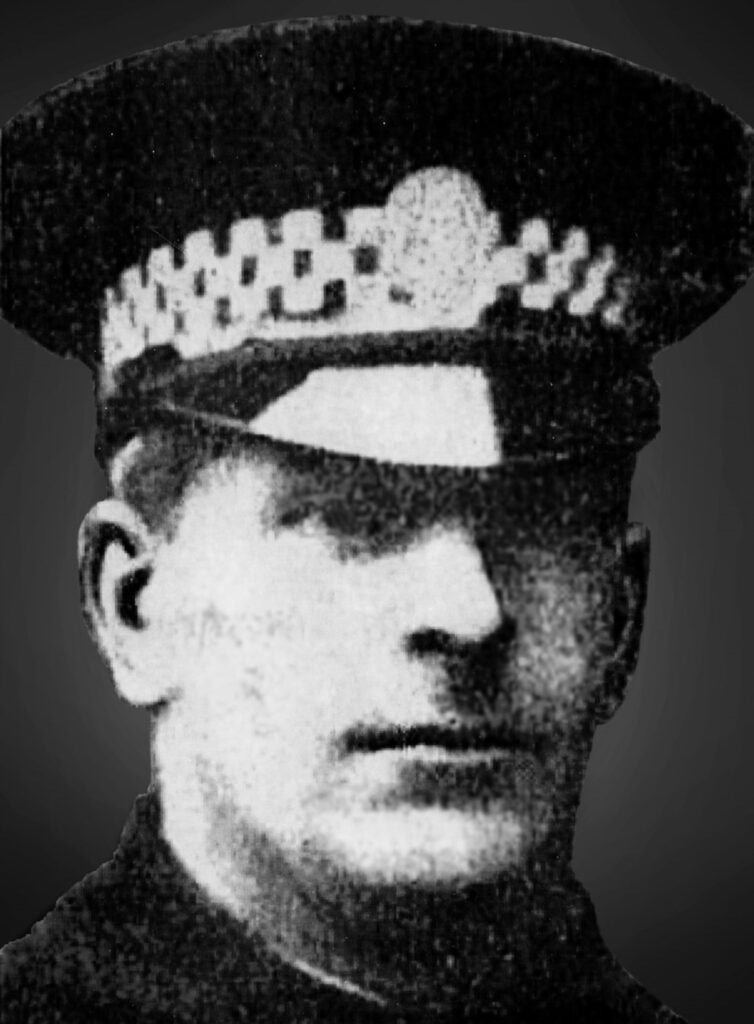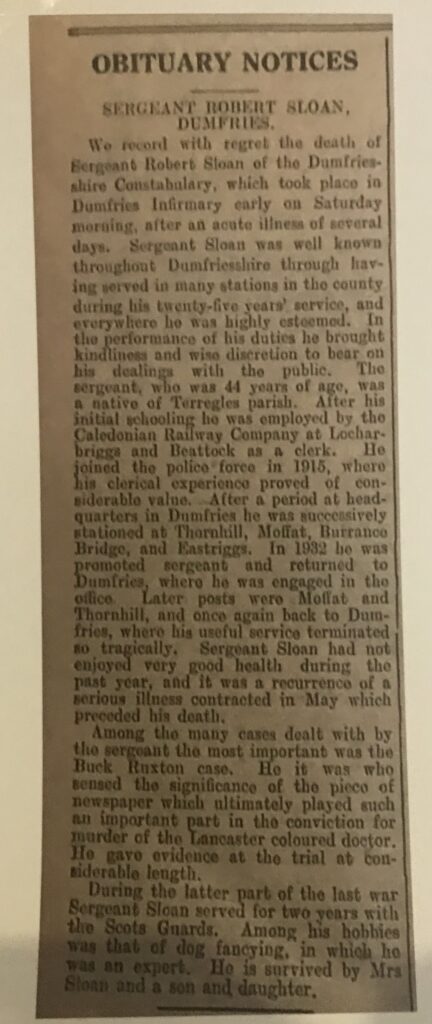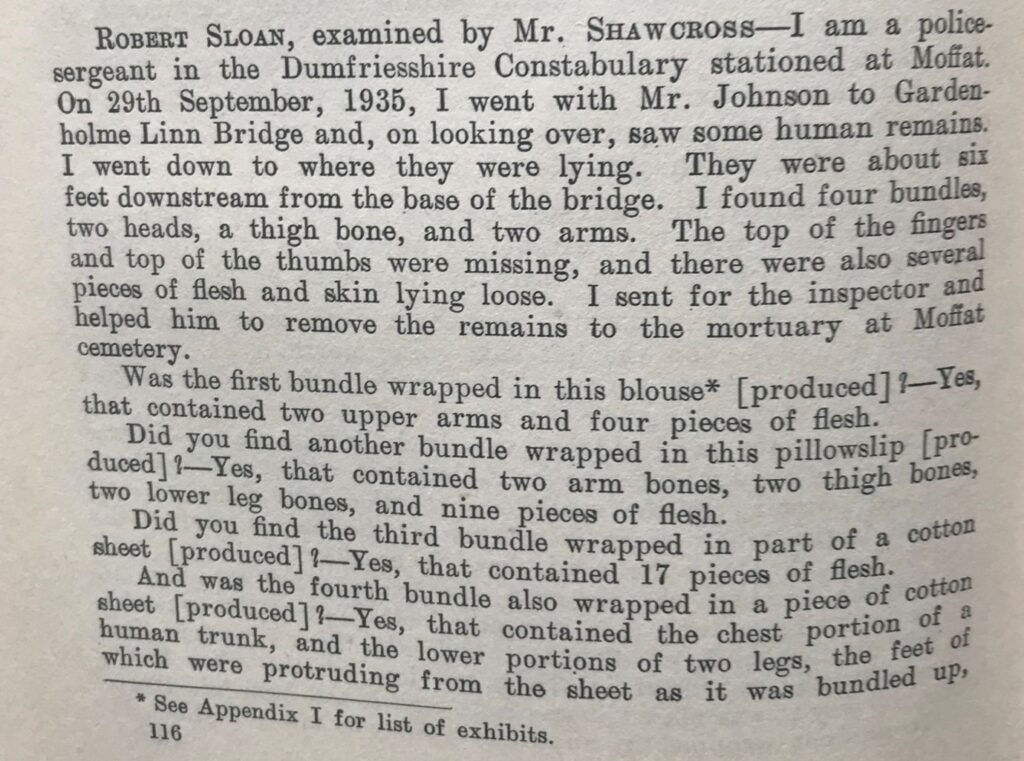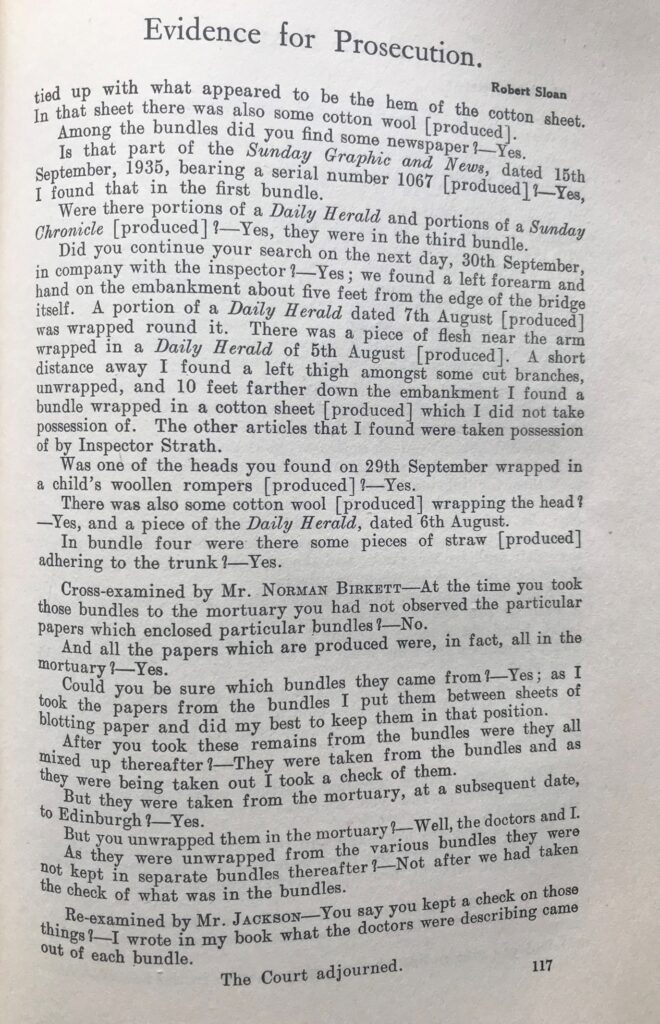
Robert Sloan was born at Terregles, Dumfriesshire in 1896. He was employed as a railway clerk prior to joining Dumfriesshire Constabulary in 1915 and served as a police constable at Dumfries and several rural police stations including, Thornhill and Glentarras.
In 1917 he served in the Scots Guards, during the First World War. Re-joining Dumfriesshire Constabulary after the War, he served at several rural police stations including Burrancebridge and Eastriggs prior to be being promoted to sergeant in 1932. He was then posted to Moffat taking charge of, and living in, the police station there.
In 1935 he was on duty at Moffat Police Station when he was summoned to the Buccleuch Arms Hotel where some guests who were holidaying in the area told him of seeing human body parts in the bed of the burn at Gardenholm Lynn, 2 miles from Moffat.
Sergeant Sloan cycled to the Linn with two of the hotel guests and saw various body parts scattered around the area. Some of them were wrapped in rags and wet newspapers.
After sending the guests back to Moffat for assistance, Sergeant Sloan took out his notebook, the sole piece of equipment he had with him, and began to write a description of the macabre sight he saw before him and drew a sketch of the area, recording everything of significance.
Assistance arrived in the form of Police inspector Strath from Lockerbie with one of the few cars possessed by Dumfriesshire Constabulary. By this time, dusk was falling and Sergeant Sloan and Inspector Strath, realising, time was of the essence, meticulously gathered each rotting body part and placed them in the police car. These parts were then taken to the small local mortuary where they were lodged pending postmortem examination.
Sloan preserved the newspapers, clothing and cloth which was wrapped round many of the body parts. Their preservation would prove crucial in the investigations.
Soon, police officers from other places arrived in Moffat to assist with further searching, along with doctors who would examine the body parts recovered by Sergeant Sloan. Dumfriesshire Constabulary was a small police force and had no Criminal Investigation Department. There was little need for one as the area had little serious crime. Each police officer was his own detective.
However, it was not long before experienced detectives from Glasgow and Edinburgh became involved in the investigation which was protracted but eventually led to an arrest and murder conviction.
The success of the investigation was much aided by the primary work of Sergeant Sloan whose innate common sense and dedication to duty prepared the way for those who would continue the investigation far beyond Moffat.
Today, an investigation of this magnitude would be commenced by the crime scene being cordoned off for several days and meticulously scoured by forensic experts. Floodlighting would be used to illuminate the area when darkness fell. A Major Enquiry Team consisting of experienced detectives would be dedicated to the case for however long it took to resolve the matter. All of these people would have received training in the investigation of murder and the preservation of crime scenes.
Sergeant Sloan was a country policeman whose experience of serious crime and murder was extremely limited indeed. He spent his police service in rural areas where the type of crimes he typically dealt with would be matters such as poaching and theft of poultry. He had no training in the preservation of crime scenes or forensic matters.
His contribution to the shocking and complex investigations resulting from the murders of Isabella Ruxton and Mary Jane Rogerson cannot be overstated. Sloan’s methodical work in securing the crime scene, preserving evidence and taking careful notes and sketches proved to be invaluable to the scientific experts who later worked on the case. His early attention to the newspapers, in which some of the body parts had been wrapped, putting them between sheets of blotting paper enabled their preservation as extremely significant pieces of evidence. Similarly, his care and preservation of the clothing found at the scene enabled later positive identification. `Sergeant Sloan was promoted to the rank of inspector in 1938 and thereafter served at Thornhill and Dumfries. He died at Dumfries on 21 December 1940.
Notes taken at the Trial of Buck Ruxton
From ‘Trial of Buck Ruxton’ edited by R.H. Blundell and G.H. Wilson

Dumfries Constabulary 1933
The photograph is taken outside the then Police Headquarters; this is now the back of the Council Buildings on English Street in Dumfries. The entire Constabulary is in the photograph. Sergeant Robert Sloan is seated on the very end of the Front Row LHS, Chief Constable William Black in the centre of that row,
Photograph kindly loaned by Police Scotland






